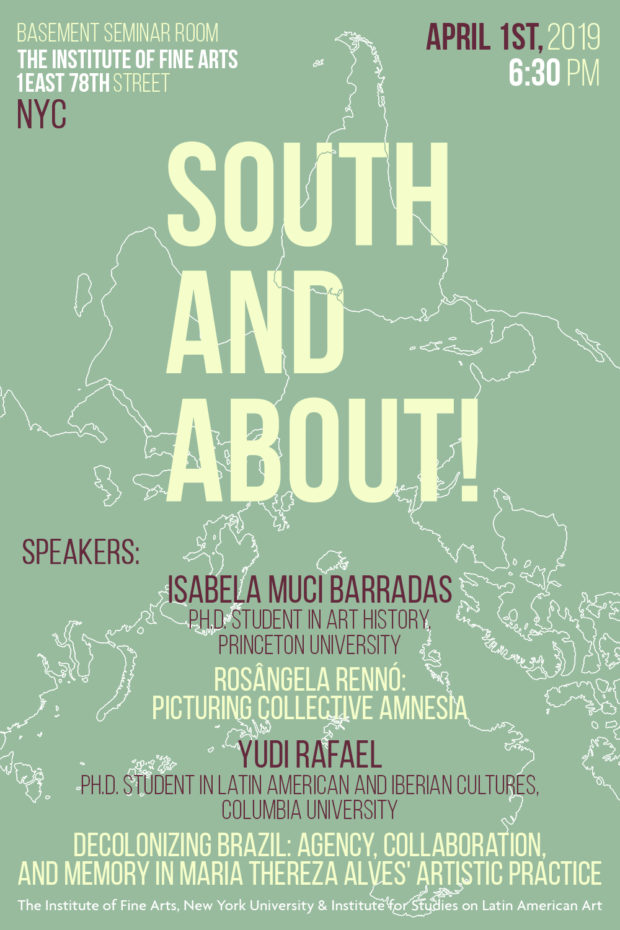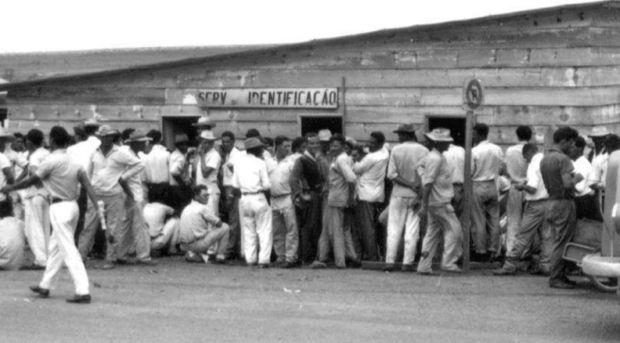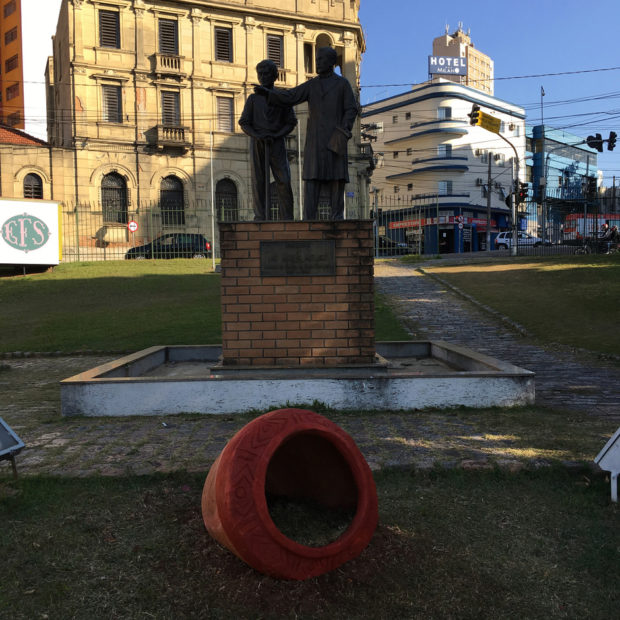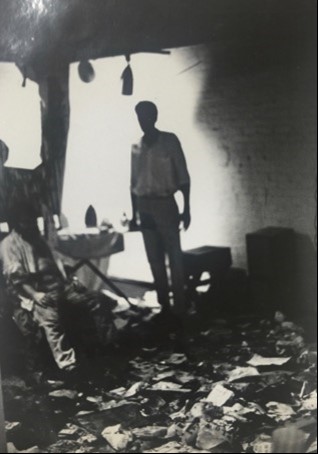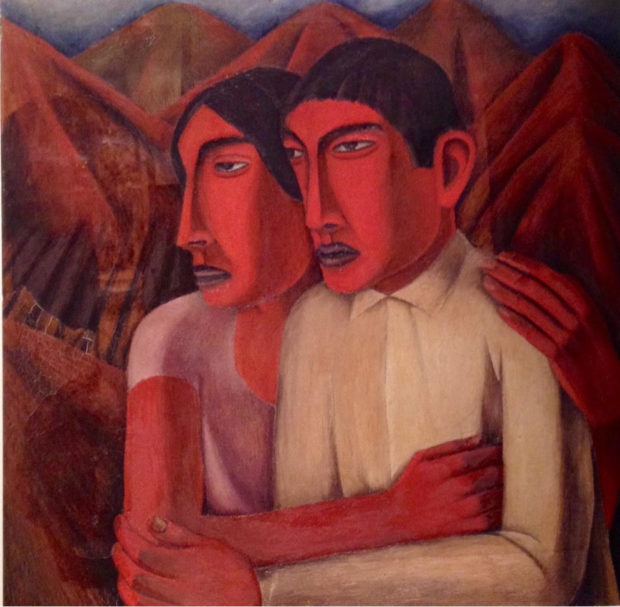South and About! Spring 2019
April 1st
South & About! is a student-organized research workshop on the arts from Latin America and the Caribbean. This program invites graduate students and emerging scholars in art history and related disciplines to participate in informal discussions amongst their peers.
Rosângela Rennó: Picturing Collective Amnesia
Isabela Muci Barradas, Ph.D. Student in Art History, Princeton University
Rosângela Rennó’s 1994 photo-installation Imemorial comprises identification headshots of workers who died in the process of building the city of Brasilia along with portraits of children registered to work in the capital’s construction sites. Sourced from the public archives of Brazil’s Federal District, the images attest to the precarious labor practices involved in erecting one of the largest monuments of the country’s modernizing project. Imemorial brings to light the suppressed violence of official memory by deploying photographs both as fragile records of state oppression and anonymous tombstones of remembrance. This presentation addresses the ways in which Imemorial invokes the notion of ‘document/monument,’ as proposed by historian Jacques Le Goff, through its use of identification images, allowing for an examination of social amnesia by scrutinizing the power structures that conjure documents and monuments alike. By reminding us that memory and oblivion go hand in hand, Rennó’s Imemorial ultimately incites spectators to take part in a process of productive remembering in order to address collective amnesia.
Decolonizing Brazil: Agency, Collaboration, and Memory in Maria Thereza Alves’ Artistic Practice
Yudi Rafael, Ph.D. Student in Latin American and Iberian Cultures, Columbia University
Since 2010, Maria Thereza Alves has participated in a series of large-scale exhibitions in Brazil, for which she has created a body of commissioned works that responded to, and intervened in, the Brazilian context. In the meantime, the artist published the essay “Canibalismo no Brasil desde 1500” (2013) in an open-access platform, discussing the continuity of colonial practices in contemporary Brazil and its manifestations within the cultural field. This presentation examines this body of work, and the way the notion of agency, collaborative strategies, and the mobilization of memory become core elements in its projects. Produced in collaboration with indigenous leaders and communities, researchers and activists, they render visible silenced histories, and articulate counter-hegemonic perspectives and political agencies, outlining a decolonial project that asks of us to imagine future otherwise.
—
February 25th

South & About! is a student-organized research workshop on the arts from Latin America and the Caribbean. This program invites graduate students and emerging scholars in art history and related disciplines to participate in informal discussions amongst their peers.
Twelve Evenings of Manipulation: Immersed in destruction with Raphael Montañez Ortiz at the Judson Memorial Church Gallery
Ana Cristina Perry, Ph.D. Candidate in Art History, CUNY Graduate Center.
Aftermath of Destruction Room, Twelve Evenings of Manipulation, Thursday October 5th, 1967. Judson Memorial Church Gallery.
In 1967, New York born and based artist Raphael Montañez Ortiz (b. 1934) presented Destruction Room for the exhibit The Twelve Evenings of Manipulations organized by Jon Hendricks at the Judson Memorial Church Gallery in the West Village. Over the course of an hour in the dark basement, thirty participants exploded paper bags, tore furniture, and burned clothes and food with artist Lil Picard, while Ortiz and Jean Toche dripped cow’s blood down projector screens that displayed images of a heart and a lobotomy and carved into the screens like surgeons. In the accompanying “Destruction Theater Manifesto,” Ortiz stated that “Destruction Theater” would “humanize” art, or, in other words, destruction would introduce viscera and emotion into aesthetic experiences.
Ortiz’s immersive destructive environment kicked off the twelve evenings and the work, as well as his manifesto, crystalized the anti-commercial and antagonistic structure of the exhibition. As Hendricks wrote, “The events are relevant…They are relevant to a state of mind that says I don’t give a shit, it doesn’t concern me, I’m removed, I don’t want to get involved.” Between October 5th and October 22nd, 1967, Ortiz and the other artists Jean Toche, Allan Kaprow, and Carolee Schneemann organized events that were messy, tense, and unpredictable, allowing for complicated or antagonistic actions and emotions to emerge. This paper will analyze Ortiz’s Destruction Room, and the broader schedule of events for Twelve Evenings of Manipulations, to consider how the artists harnessed the messy and chaotic nature of the contemporary moment, in order to create works that confronted contemporary violence, whether it be the Vietnam War, Civil Rights, or the more arbitrary violence that people enact against each other in the day to day.
Against “Epidermal” Mexicanism: Rufino Tamayo’s Early Work Between Mexico City and New York
Francesca Ferrari, Ph.D. Candidate in Art History, Institute of Fine Arts
Mexican artist Rufino Tamayo inaugurated his transnational career between Mexico and the United States with two works that shared the same title and subject matter. The painting Man and Woman, featured in Tamayo’s first solo show in Mexico City in April 1926, powerfully echoes the homonymous print that Tamayo included in his first individual exhibition in the United States in October of that year. In both works, Tamayo depicted a couple of campesinos of seemingly indigenous origins in an evocative rural landscape. In different ways, the artist’s renditions of this subject appear as a reaction to the racist undertones pervading the reception of Tamayo’s own work on both sides of the border. The painting and the print demonstrate the artist’s self-reflexive skepticism vis-à-vis the ideologies that aestheticized rural people of the indigenous background while virtually excluding them from the modernizing cultural program of the Mexican state and the cultural revival of Mexican arts and crafts in the United States. This presentation analyzes the variations between the two iterations of Man and Woman to discuss Tamayo’s subtle critique of the cultural politics of Mexico and its North American neighbor.
